When you have a discreet celebrity living in the area, who has recently (at least in my time scale) earned critical acclaim for a book (here, there and also there for instance), there arises an opportunity to join the commentators (or ‘pundits‘ as she wrote in her publication) and compose a review.
Penelope Corfield’s work on the Georgians can be depicted in many ways: a deep exploration of a period that was precursor in so many changes, an exhaustive study, digging into every facet of the Georgian period with a precision that exude the scholarly rigor expected of academic work.
As former president of the International Society for Eighteenth-Century Studies (ISECS) from July 2019 to July 2023 and previously President of the British Society for Eighteenth-Century Studies (2008-10), Penelope Corfield is her zone of comfort. Professor of History at Royal Holloways London University, her CV is nothing short of impressive and why she has not a page on Wikipedia yet seems a mystery to us.
The online encyclopedia could have underlined her deep links to Battersea and Northcote Road area, where she is still living and her past and present involvement in local activities. Notably, she served as a Councillor on the London Borough of Wandsworth in the early 1970s and “an active participant in a progressive Labour administration – a formative experience” as she put it on her website. She contributes to Battersea Matters, Battersea Society’s quarterly Newsletter and says:
“It’s good to be involved in a local area, as well as enjoying all the attractions of metropolitan London.”
“The Georgians: The Deeds and Misdeeds of 18th Century Britain” is a dense 400-page volume (although the author told us it was originally double that amount) that meticulously dissects every component characterising this era, starting with a comprehensive definition of the “elastic” period, stretching from the late 17th century to the early 19th century, named after the succession of monarchs bearing the name George – George I, II, III, and IV.
While the book analyses advancements in science and urbanisation, its focal point is undoubtedly an extensive examination of Georgian society in all its complexity. It explores the various aspects of their experiences, from moments of optimism to periods of gloom, their family lives, their sexuality (especially their attitudes towards marriage, that will also play a role later in the book with cross unions between nobility and wealth) and the weight of literacy (free compulsory schooling for all British children enacted in 1870, but also the remark that “public schools, so named as they were ‘public’ to all who could pay“), the (slowly vanishing) influence of religion (the last death for blasphemy was in 1697, we learn), the question of public life and the political powers.
She also wrote about the questionable sense of decline that transpired from the country (a belief that seems to affect particularly the French nowadays, at least according to some International Surveys). It’s worth noting that this aspect of the narrative might not have been the most intuitive to write, given Corfield’s self-description in the introduction as: “temperamentally optimistic”. Nevertheless, the book frequently makes references to the neighbouring country across the Channel, either to draw comparisons or highlight differences. The French of the 18th century are described as “frivolous” but also with a dose of uncertainty due to their trouble history at the turn of the century, which leads to comment: “Evolutionary changes seemed preferable to unpredictable revolutions” for Georgians. And for those who wonder why the parliament is formed with two sets of opposing benches, we learn that it was thought that the circular auditorium would emulate too much of the French revolution.
Throughout the chapters, we read about the role of trades, emphasising that the expansion of the British Empire was primarily motivated by commercial interests. It extensively examines the issue of slavery, tracing the lengthy process of its abolition, which commenced in 1807 with the abolition of the slave trade and culminated in the abolition of slavery itself in Britain in 1833 (1843 for India). The author chose to highlight the words of an abolitionist at the time, questioning: “But is not the slave trade entirely a war with the heart of a man?“. This subject is carried throughout the book towards the last page and an thoughtful tale about the perspective on slavery.
Given the author’s personal interest and involvement in the Labour Party, her commentary on social progress is particularly insightful. Corfield discusses how the Georgians played a role in expanding the concept of social security, tracing its roots back to the 17th century when the idea of safety-net support began to emerge, primarily organised at the local level through parish networks. Furthermore, she sheds light on discussions that took place in 1797 regarding a Universal Basic Income (or actually closer to the idea of pension as it was dedicated to over fifty years old), noting that it did not receive support due to concerns about it being perceived as too “communitarian.” She mentions also the move towards mutual support in the forming of local trade unions and unemployment insurance.
Several chapters are dedicated to a thorough analysis of the class divisions within society, spanning from the aristocracy to the emerging middle class and the working class. Corfield explains that the 18th century seems to become the pivotal period when aristocracy is not longer simply associated with titles and family linage, but marked with the rise of wealth through trade and commerce. However there are already (as nowadays) apparently some difficulties in defining who belongs to the middle class versus the lower class. Additionally, the book explores a fascinating evolution in social customs, particularly in greetings. It documents the transition from elaborate gestures such as deep bows, removal of hats for men, and deep curtseys for women, to the more egalitarian practice of handshakes.
The connection between the author and her subject emerges vividly through the meticulously crafted words composing each chapter, an essence palpable throughout the entire reading experience. Corfield’s writing style bears a distinctly academic nature, characterised by the frequent utilisation of less common vocabulary selected with precision, carefully tailored to convey nuanced meanings. Her prose carries an air of elegance and occasional drama, reflective of her scholarly and historical background, which undoubtedly influences her choice of language. This tendency is particularly notable in discussions on the different fate of social classes where legal terminology often punctuates the text, enhancing its precision and literary depth, albeit at the cost of potential verbosity and complexity.
While we understand that the author wanted to remain totally factual and not venture towards parts potentially opinionated territory, we must notice that certain parts of the narratives resonate particularly with reflections that are relevant today. For instance, Corfield observes that: “reporters tended to exaggerate the scale of organised criminality among the lower orders” while there were “unknown numbers engaged in fraud and financial malfeasance”; and maybe reflecting on the post-pandemic debate about work, she wrote: “being ‘at work’ is not always a negative experience … much depends on the type of work and working conditions“. However, it’s worth noting that Corfield’s comments are always carefully balanced: “What precisely constitutes true social ‘worth’ – and how it can be best fostered – remain debated questions“.
Those echoes to present time could have filled the “Time-Shift: Then and Now” section, which is a a distinctive feature of the part that ends each chapter. After all, doesn’t she dedicate the end the book to an explanation of the relevance of history in understanding current time, saying: “Illumination from past times helps to frame present decisions which then affect the future“? Instead, Corfield opted for a less contentious narrative and chose to recommend features that connect us to Georgians, offering recommendations for reading, viewing, and visiting.
After probably refraining many comments (although as noted above, Corfield’s views might have been perceivable in some parts of the text), the final chapter that gave the title of the book, “Georgian Deeds and Misdeeds” is eventually an opportunity to express opinions more freely. And Corfield, as careful as usual, justifies this departure from strict neutrality at the outset of the chapter, stating: “Historians assess whether individuals acted rightly or wrongly in their given circumstances; and they are entitled to make similar assessments of societies as a whole, provided they can explain their criteria for judgement“, which in our case is this book about Georgian’s time.
But in the concluding chapter, where Corfield aims to wrap up her study of the Georgian era, she maintains the cautious approach that she has paved her pages with: “There are claims and counter claims“.
After analysing the period and highlighting how the Georgians are at the start of so many changes that have helped shaping our resent time (and occasionally our current problems), this is the moment to address the question: Is Georgian’s time the age of modernity? While she refrains from offering a definitive answer, she suggests that it’s “not nearly so clear-cut” (once again, her academic precautious). One notable attribute of the Georgians is their propensity for experimentation, a characteristic that undoubtedly fueled innovation and sparked numerous changes that continue to reverberate through time, shaping contemporary society in both positive and negative ways (thus the subtitle “The deeds and misdeeds of the 18th century“). On the one hand the many progress in term of tolerance, individual rights, liberal alternatives, the decline of random violence, the raise of the middle class, the trade regulations…. and on the other hand as she put it: “Today’s global climate emergency is, after all, a direct legacy of the Georgian coal-mining boom” (which apparently Georgians commentators perceived at the time), ending this book with the reflection that our current societies “big” concerns “can all become part of Georgian through-time meaning now“.
“Specific Georgian legacies […] gain extra resonance when viewed through the unfolding of time”
And while we must not judge the past according to our contemporary values, Corfield ends the book with a sentence that could encapsulates the purpose of historical work: to show “how the full lessons from the past can be understood and applied in both present and future”.
The Georgians: The Deeds and Misdeeds of 18th Century Britain by Penelope J Corfield Yale, 488 pages (available in hardcover and paperback edition)
In 2008 Penelope Corfield also scripted and created an hour-long video on Battersea’s Labour History, with Producer & Director Mike Marchant (1949-2009) and participations as narrators of Timothy West, Prunella Scales, Pippa Sparkes and Su Elliott. This documentary can be watched on YouTube with the iconic Battersea Power Station as the initial image: Red Battersea.
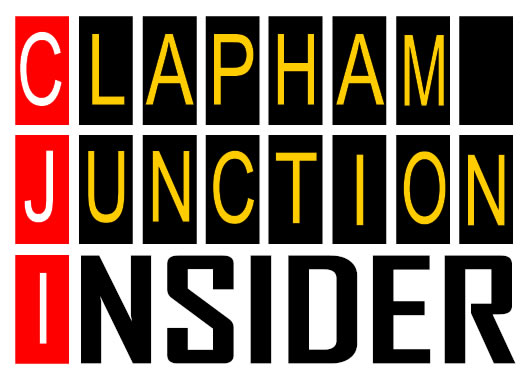

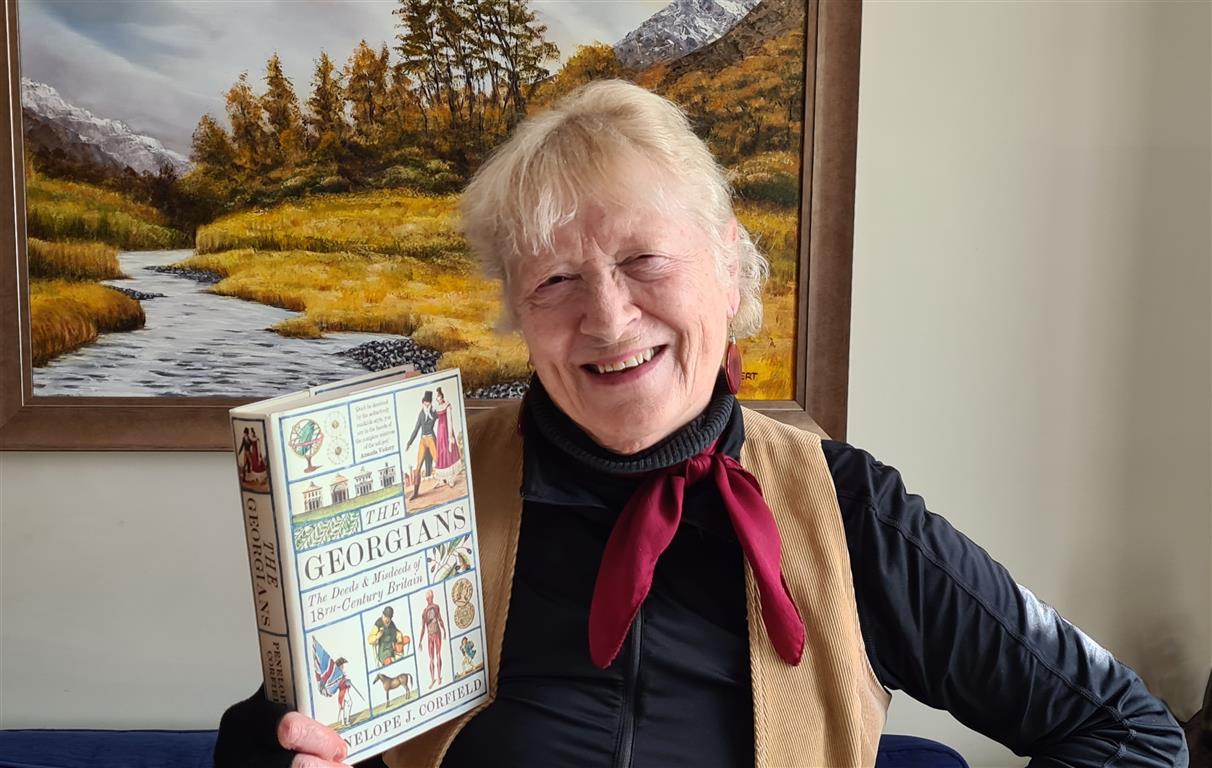
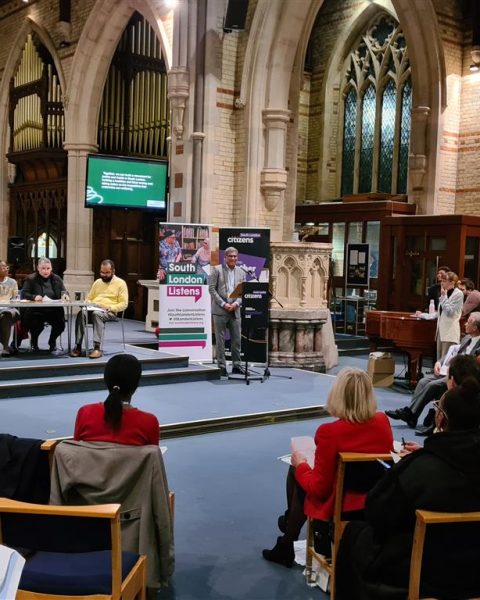
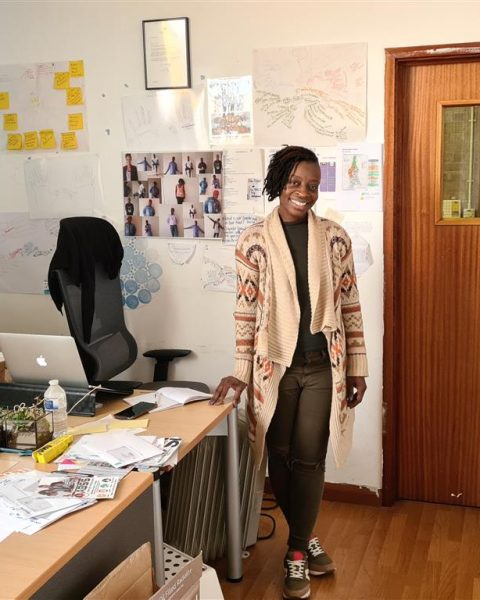
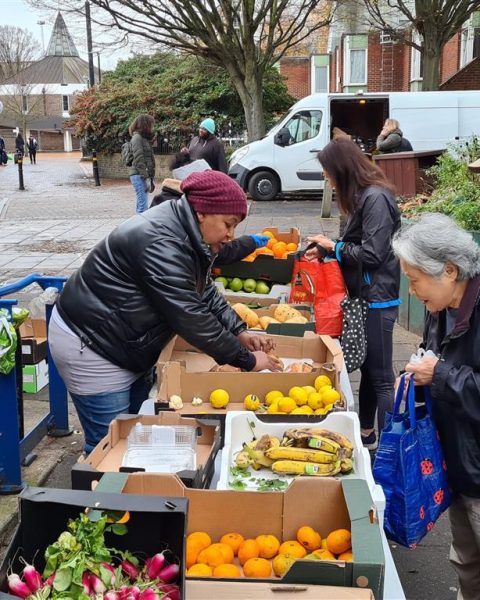











Zut alors! There are many things that eighteenth-century Britain learned from France (including fashions and food). But also some lessons that the eighteenth-century Brits sent back in return. Don’t be too absolutist! Learn to experiment: if something won’t work in one guise, then try another! Try reason in politics, not terror! Keep optimistic! Respect the British Navy! And get a good dictionary to enjoy all the nuances of the hybrid English language, which paradoxically pioneered European union by fusing Old German with Norman French! Voila alors! PJC.